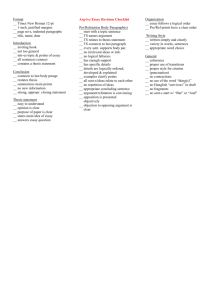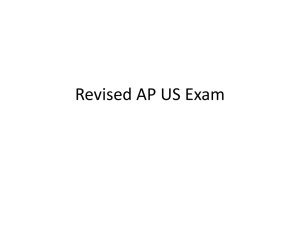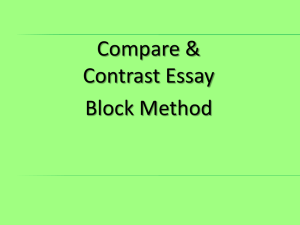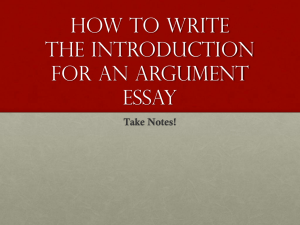HISTORICAL ARGUMENTATION… American Imperialism
advertisement
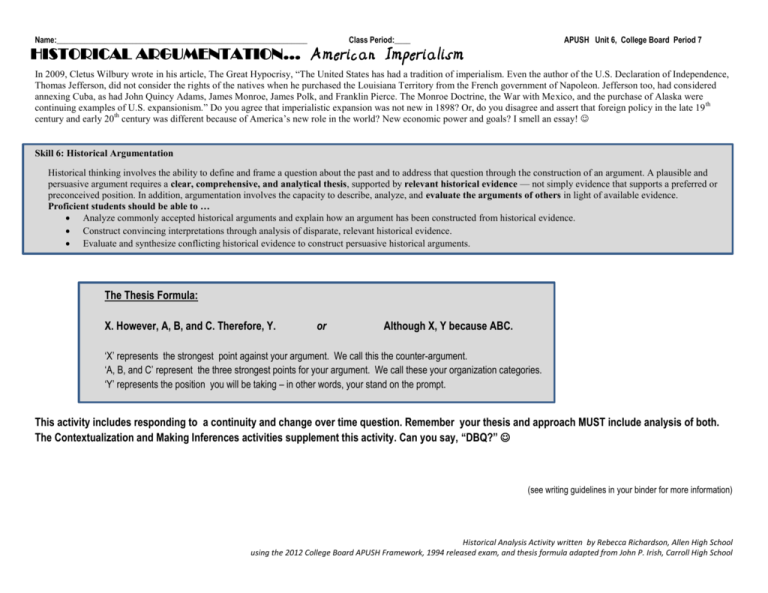
Name:_______________________________________________________________ Class Period:____ APUSH Unit 6, College Board Period 7 HISTORICAL ARGUMENTATION… American Imperialism In 2009, Cletus Wilbury wrote in his article, The Great Hypocrisy, “The United States has had a tradition of imperialism. Even the author of the U.S. Declaration of Independence, Thomas Jefferson, did not consider the rights of the natives when he purchased the Louisiana Territory from the French government of Napoleon. Jefferson too, had considered annexing Cuba, as had John Quincy Adams, James Monroe, James Polk, and Franklin Pierce. The Monroe Doctrine, the War with Mexico, and the purchase of Alaska were continuing examples of U.S. expansionism.” Do you agree that imperialistic expansion was not new in 1898? Or, do you disagree and assert that foreign policy in the late 19 th century and early 20th century was different because of America’s new role in the world? New economic power and goals? I smell an essay! Skill 6: Historical Argumentation Historical thinking involves the ability to define and frame a question about the past and to address that question through the construction of an argument. A plausible and persuasive argument requires a clear, comprehensive, and analytical thesis, supported by relevant historical evidence — not simply evidence that supports a preferred or preconceived position. In addition, argumentation involves the capacity to describe, analyze, and evaluate the arguments of others in light of available evidence. Proficient students should be able to … Analyze commonly accepted historical arguments and explain how an argument has been constructed from historical evidence. Construct convincing interpretations through analysis of disparate, relevant historical evidence. Evaluate and synthesize conflicting historical evidence to construct persuasive historical arguments. The Thesis Formula: X. However, A, B, and C. Therefore, Y. or Although X, Y because ABC. ‘X’ represents the strongest point against your argument. We call this the counter-argument. ‘A, B, and C’ represent the three strongest points for your argument. We call these your organization categories. ‘Y’ represents the position you will be taking – in other words, your stand on the prompt. This activity includes responding to a continuity and change over time question. Remember your thesis and approach MUST include analysis of both. The Contextualization and Making Inferences activities supplement this activity. Can you say, “DBQ?” (see writing guidelines in your binder for more information) Historical Analysis Activity written by Rebecca Richardson, Allen High School using the 2012 College Board APUSH Framework, 1994 released exam, and thesis formula adapted from John P. Irish, Carroll High School Name:_______________________________________________________________ Class Period:____ APUSH Unit 6, College Board Period 7 HISTORICAL ARGUMENTATION… American Imperialism Step #1 Read the question or prompt carefully: Read the question three times and be able to paraphrase the question and know the essential task demanded by it. Answering the question will be the central focus of your essay, and you want to be sure to ATFP: Address The Full Prompt. What are the parameters? What is your purpose? Discuss this with your group before moving on to the next step. Prompt: To what extent was late nineteenth-century and early twentieth-century United States expansionism a continuation of past United States expansionism and to what extent was it a departure? Step #2 Brainstorm on paper everything that comes to mind regarding the topic at hand. Aim for at least 10 specific things. What do you know about the topic? Put this down on paper to get your brain in gear for writing the essay. Once you have amble information, categorize it by theme. (ABC) 1. 6. 2. 7. 3. 8. 4. 9. 5. 10. Step #3 Clarify your thesis/view and identify an opposing view. Discuss these views with your group, and make sure you have a specific example to back up your X! Step #4 Write your introductory paragraph. USE THE FORMULA! Make sure your thesis ATFP! Don’t restate the prompt! Historical Analysis Activity written by Rebecca Richardson, Allen High School using the 2012 College Board APUSH Framework, 1994 released exam, and thesis formula adapted from John P. Irish, Carroll High School






